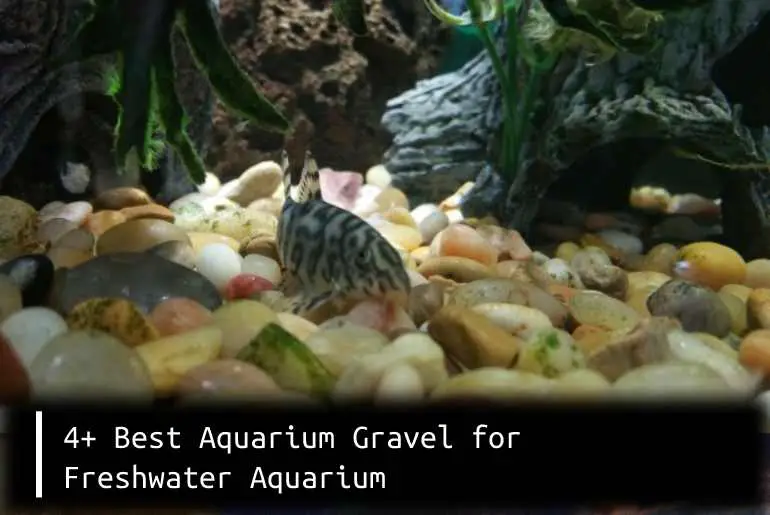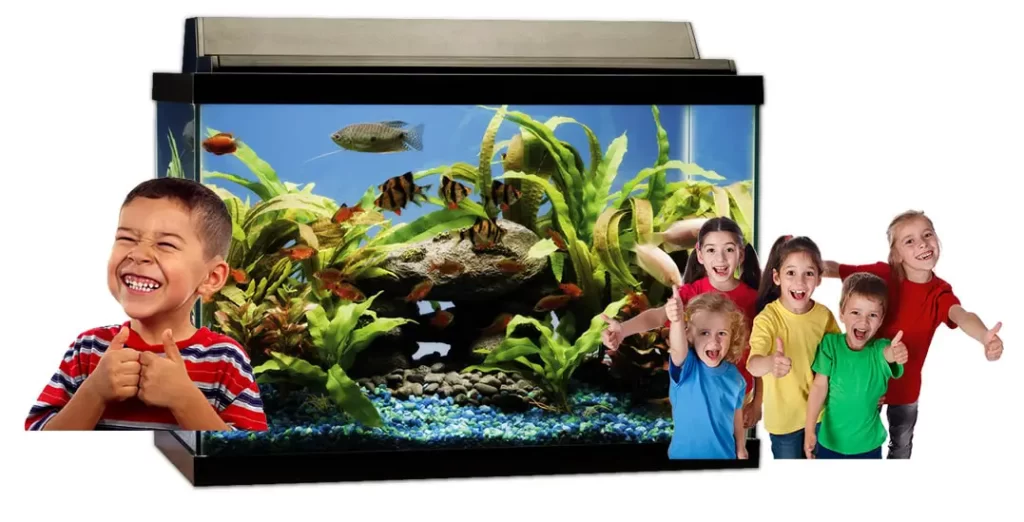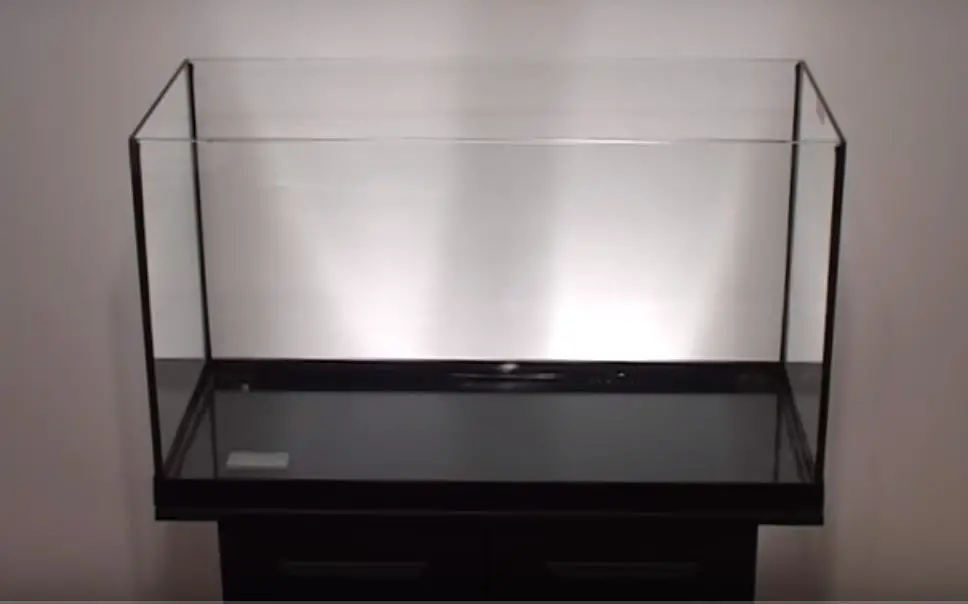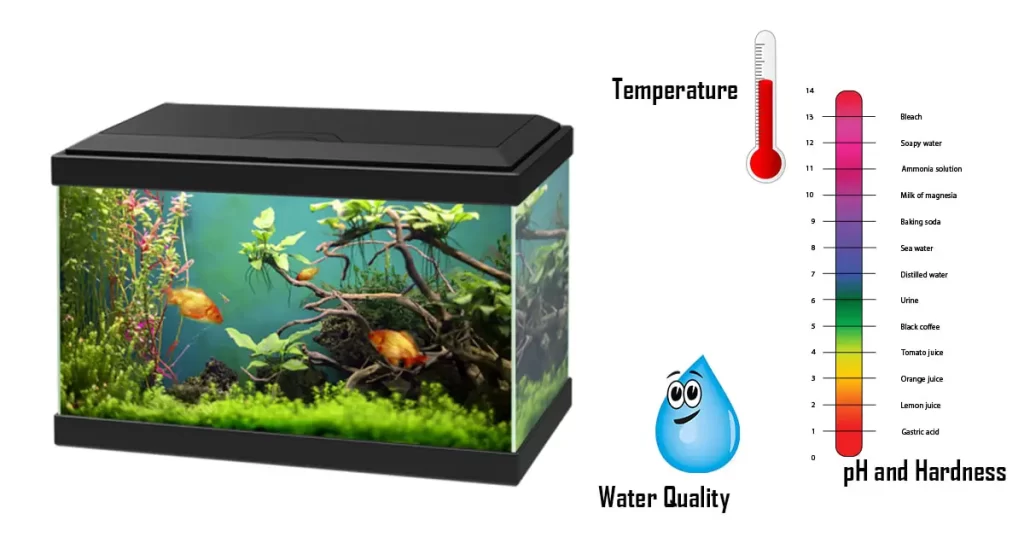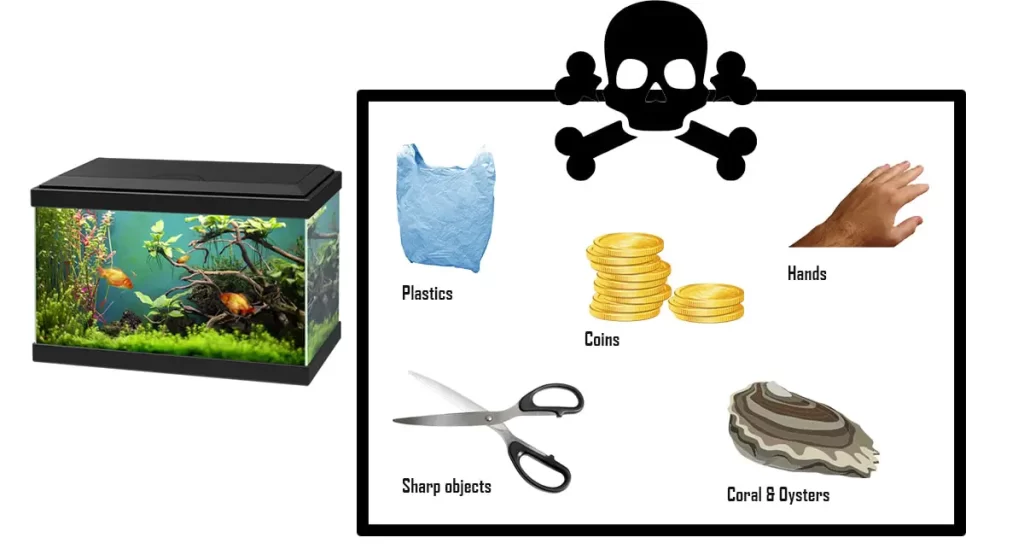In your aquarium, what is at the bottom? The substrate, or aquarium gravel, is one of the topics that is frequently discussed while you are getting ready to set up a new aquarium.
Substrates are one of the crucial elements you’ll need when putting up a freshwater aquarium. The term “substrates” simply refers to a layer of one object on top of another. Substrates for aquariums come in a wide variety of varieties. Aquarium gravel for freshwater is one kind of substrate. This particular kind of substrate is designed for use in freshwater aquariums.
Aquarium Gravel and Fish
Almost all fish tanks have a bottom that is lined with gravel, pebbles, sand, or some other substrate. In most circumstances, it doesn’t really matter what kind of substrate you choose.
What about fish and aquarium gravel, though? Is there one type of aquarium gravel that works best for your specific fish? It depends is the answer.
It mainly depends on what kind of ornamental fish you have. Bettas, Tetras, Livebearers, and other mid-to-surface dwelling aquarium fish that rarely sink to the bottom of the tank are not picky. You can keep them in aquariums with sand, fine pebbles, and large gravel clumps…it doesn’t really matter.
Cichlids are medium to bottom-dwelling aquarium fish that dig quite a bit. Sharp gravel and oversized grains can damage the lips as they burrow in preparation for spawning.
Corydoras, Kuhli and Clown Loaches, Spiny Eels, and other bottom-dwelling aquarium fish that like to burrow are more affected by gravel grit. They should only be stored in tanks with fine pebbles with smooth edges. Sand bottom tanks are even better for these fish.
Is Aquarium Gravel Better than Sand?
Even though it’s not always the greatest option for every occasion, gravel is superior in many aquarium scenarios.
The ideal option for freshwater aquarium gravel is typically clean gravel or substrate, in general.
Because gravel is typically large enough to allow water to pass through the spaces between pieces, fewer bacteria, namely harmful bacteria, can develop between cleanings.
But there are times when sand is preferable. For particular sorts of saltwater aquariums, sand is the material that makes the most sense.
For starters, it appears more organic than colored gravel chunks. Second, compared to gravel, substrate sand that is tightly packed requires less cleaning.
Additionally, unlike with gravel, food particles remain on top of sand rather than between the fragments.
What are the Benefits of using Aquarium Gravel?
There are many advantages to using gravel as the substrate in a freshwater aquarium. Gravel has a number of advantages, like helping plants and decorations stay anchored to the ground, concealing aquarium equipment, providing a space for good bacteria to do their work, and many more.
Below mentioned are some benefits of having gravel in the aquarium.
Natural Environment
The substrate is formed of gravel or sand in the fish’s native environment. There will be a more natural atmosphere for the fish in the aquarium due to the gravel.
Fish will experience less stress if their surroundings are more natural. Stress can cause illness and even death, as you are well aware.
It’s critical to design their environment in a manner that is as similar to their native habitat as is practical for this reason.
Breeding Ground
Most freshwater fish species lay their eggs in the gravel. This is done to stop larger fish from consuming the eggs before hatching.
The fish will use her pectoral fin to punch a hole in the gravel just before she lays her eggs. She will deposit her eggs and cover them with gravel once it has sunk to a depth of about an inch.
When the fish fry hatch, gravel is another incentive to put it in the aquarium. Most fries hide in the gravel for a bit after they hatch. To avoid being eaten by larger fish, this is their natural instinct as soon as they are born.
Live Plants
Live plants in an aquarium that has gravel may flourish. Furthermore, live plants bury their roots in a substrate, such as sand or gravel, in their natural habitat. So that they won’t drift around aimlessly, they do this to tie themselves to the earth.
Gravel also serves as a source of nutrients for the plants to absorb through their roots, in addition to holding the live plants in place.
Artificial Plants
Gravel is a requirement if you intend to use artificial plants in the aquarium. Plastic is used to make fake plants. Plastics have a tendency to float since they are lighter than water. The presence of gravel will aid in keeping the artificial plants in one spot and preventing them from floating around.
Beneficial Bacteria
Each piece of gravel offers a surface area where good bacteria may be able to develop. It provides a significant amount of surface area for those “good” bacteria when you think about the number of pieces of gravel are required to cover the floor of your aquarium.
Algae
Green algae seem to be a love-hate relationship among aquarium keepers.
Even though an excessive amount of algae can sometimes be ugly on the tank’s glass and decorations, many fish species actually benefit from as well as love eating algae as a part of their diet.
Gravel can promote algal growth, so you should think about including some algae-eaters in your setup to help keep it under check. Additionally, it is possible to remove the algae off glass and other surfaces without robbing your fish of an important food source.
What are the Disadvantages of using Aquarium Gravel?
Despite all of its benefits, aquarium gravel has a few disadvantages. They are:
Time-consuming to Clean
Unfinished food scraps, fish manure, and perhaps other detritus can fall through the holes in the gravel and settle there to decompose. As a result, your filtration system eventually has to work much harder, and the water quality in the tank eventually declines.
Wasted Food
For some fish species, live, and frozen meals must make up the majority of their diet.
Blood worms and brine shrimp are examples of live items that really can readily fall among the gravel fragments, where they rot and die. Your fish can also become hungry as a result of this, in addition to damaging the environment and wasting expensive foods.
Danger to Fish
Fish with trailing finnage and those who like to burrow into the substrate may very well be hurt by sharp or rough gravel fragments if you purchase aquarium gravel of low quality.
Additionally, if you keep ornamental snails in your aquarium, they won’t enjoy crawling on the coarse, jagged gravel.
Dust
It tends to be extremely dusty, which is the biggest concern that the majority of hobbyists have with all types of gravel. Even the “pre-washed” gravel sold at aquarium stores is almost always covered in fine, sand-like dust.
The substrate, therefore, needs to be repeatedly rinsed under running water until the water seems to be clean before you can add it to your tank. This could take a little while if you have five or six bags of gravel to prepare.
When Do You Not Want Aquarium Gravel or Substrate?
Although most aquarium settings work well with the substrate, there are a few situations when it’s preferable without.
The main circumstances in which substrate isn’t very useful are grown tanks. Grow tanks require frequent water changes, the elimination of waste and uneaten food right away, and extreme cleanliness. All of this is challenging due to the substrate.
Other places where you don’t want substrate are hospitals and quarantine tanks for similar reasons.
The Best Freshwater Aquarium Gravel
River Rock Stones by Voulosimi
The polished river rock stones by Voulosimi are some of the finest. I’ve always loved the natural environment and look for aquariums. These pebbles, which range in size and color from dark slate to light quartz stone, are used for landscaping, plants, and aquariums.
These grains range in size from half an inch to an inch. They are perfect for fish of all sizes, but unless they are larger fish. They have very little ability to be dug up by burrowers like cichlids and catfish.
Many people have discovered that the stones do come with a thin covering that needs to be removed when initially bought.
GloFish Aquarium Gravel
One of the most popular recent additions to the aquarium hobby is glofish! These genetically modified fish don’t need injections of dye to shine; instead, their coral and jellyfish DNA helps them naturally manufacture luminous colors.
Because it is so dark and in high contrast, GloFish Aquarium Gravel is one of the best gravel options for these species. The traditional option is a deep black with bright accents, but neon pink, blue, and green are also available.
They are intended to be displayed under a black light, which gives the fish and bright grains a magical glow. GloFish Aquarium Gravel has painted-on colors rather than actual gravel grains, giving it a consistent appearance and a deep, black look.
Polished River Rock Pebbles by BLQH
If you adore the beauty of river pebbles in their natural state, these stones from BLQH are definitely worth a look! They are glossier than those provided by Voulosimi but do not need to be rinsed first. Additionally, the size and shape of these stones are a bit more consistent.
Because some rocks are soluble in water, we occasionally need to remain cautious when using substrates made of rocks. The pH can sometimes be raised or decreased by limestone, shale, and other sedimentary and metamorphic rocks. However, since water cannot penetrate the coating of these pebbles to break down the minerals inside the rock, they are completely inert. Additionally, the hues are rather muted, which makes them perfect for betta aquariums and natural aquascapes!
You can get it here.
Mixed Polished Gemstones by Gold shine
The 7-12 mm gravel grains from Goldshine are perfect for all of those seeking something with even more polish! Natural gemstones, such as marble, chalcedony, lazurite, and other stones with beautiful swirls and neutral colors, make up these stones.
Most of these pebbles are neutral in water, and many of them differ from conventional spherical grains in shape by having an unusual rectangular shape. The only major drawback is that even a small freshwater fish aquarium would cost quite an amount of cash to fill. This might be quite expensive. You are purchasing jewels. Therefore, that is to be expected.
Granite Mini Pea Gravel by Maynooth Natural Granite
Another substrate with a natural appearance that uses rock rather than dirt is Granite Mini Pea Gravel. With neither too huge nor too small grains, these are in fact, pebbles in terms of size. Since granite (granitic gneiss) is completely inert and won’t alter pH levels, it is a great choice for aquarium pebbles. Therefore, chemical coatings are not required to keep it out of the water.
Don’t add this small pea gravel to tanks with Corydoras or even other fish with soft skin or whiskers because it is a bit on the harsh side. And because it comes in 5 lb (2.27 kg) bags, you can rapidly and cheaply fill an aquarium with this stone gravel! You will enjoy the data that Maynooth gathers about its gravel and the surrounding area if you are a geology enthusiast.
You can get these from here.
Milky quartz, microcline feldspar, and muscovite mica are just a few of the minerals that can be recognized in the grains’ patterns. The Canadian Shield, where some of the planet’s oldest rock may be found, is where this gneiss was found.
What Color Gravel is Best for Fish Aquarium?
Many experts agree that the color and kind of substrate used should be as similar to the fish and plants you keep native habitat as it is practical.
However, most fish are versatile and, if properly cared for, will thrive in pink, red, blue, or yellow gravel.
Why Aquarium Gravel Color Matters?
The color of the stones impacts both the fish in your aquarium and the tank’s aesthetic! Many beautiful fish display washed-out colors when kept in environments with light substrates and bright illumination. This is a result of their innate drive to fit in with their surroundings. Too-bright colors make for much easier targets.
Fish colors tend to darken in response to less well-illuminated settings or are balanced by a dark substrate. They might appear significantly more colorful with a natural bottom that is brown, tan, or black.
However, utilizing plants and other types of cover will encourage your aquarium fish to remain vivid if you really like a light tan or white substrate color.
Unnatural hues like pink, blue, or green are all alternatives and, depending on the hue, have the same advantages and disadvantages as fish color. One of these colors, or even dark black aquarium gravel mixed with a few grains of other colors, is frequently used as a substrate for Glofish. When illuminated by a black light, the effect is magical and breathtaking, more similar to a rave than a regular aquarium.
Conclusion
There are numerous factors that make gravel such a crucial component of every aquarium. It not only has a nice appearance, but it also maintains the tank’s health. Gravel plays a crucial function by giving germs a home and plants a place to grow roots.
You might also be interested in how much gravel to keep in a 20-gallon tank. I have written in detail about it here.

